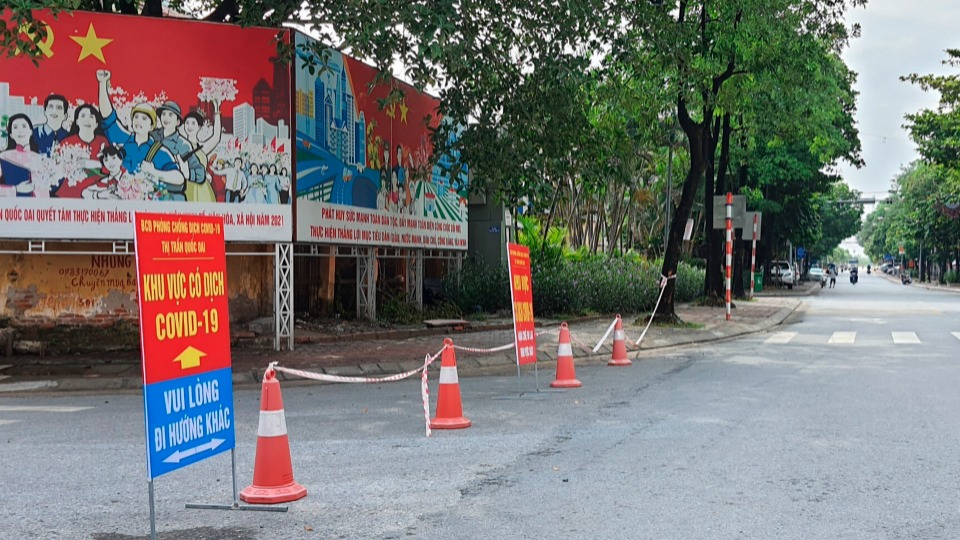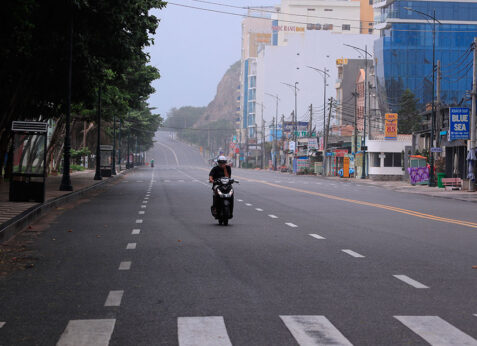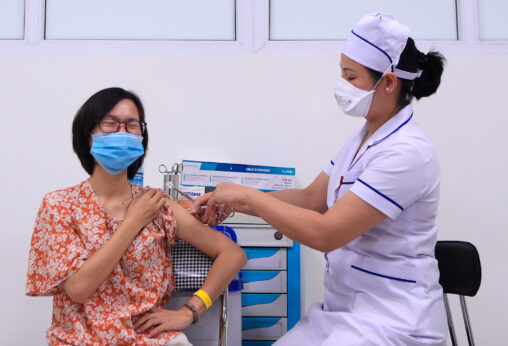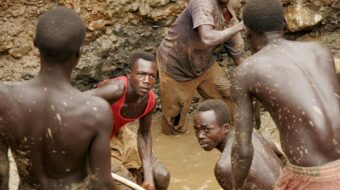
HANOI—Last year, then prime minister of Vietnam and current president Nguyễn Xuân Phúc said, “I say it’s important to protect people’s lives, not just the economy. I say we will sacrifice the economy in the short term to protect our people’s health, people’s lives!” Without a doubt, the socialist policies that put lives ahead of short-term economic growth in Vietnam were extremely effective. As of mid-May of this year, the country had seen about 3,600 coronavirus infections and only suffered 35 fatalities in a country of nearly 100 million people.
Then, the delta variant of COVID-19 struck Vietnam. As of press time, Vietnam has experienced 302,101 cases and suffered 6,770 deaths. Many reactionaries and critics of socialism are pointing to this sharp increase in infections and deaths as a sign that the socialist policies of Vietnam were incorrect and failed to protect the people as intended.
However, these critics are only showing a small part of the whole picture. A deeper dive into Vietnam’s handling of the current wave shows that these policies have continued to keep the people of Vietnam as safe as possible.
Lockdown effectiveness
One of the main arguments made by the critics of the Vietnamese government’s policies is that lockdowns don’t work. They point to the continued large number of cases as evidence for their claim. Of course, the success and near elimination of COVID-19 in Vietnam for almost a year and a half should be evidence enough for the effectiveness of properly managed lockdowns. This remains just as true during the current delta wave.
Among the first major clusters during this fourth wave were the ones found in the provinces of Bắc Ninh and Bắc Giang in northern Vietnam, as well as in the National Hospital of Tropical Disease and the National Cancer Hospital, both in the capital, Hanoi. All four of these clusters were brought under control because of strict lockdowns, and both hospitals have since been able to resume normal operations. The numbers of infections in other locked-down localities have either leveled off or begun to go down as well.

It is true that the largest outbreak has been harder to contain. Ho Chi Minh City, the country’s largest city and economic center, along with its surrounding area, has been the epicenter of the fourth wave. They have suffered the majority of infections and fatalities. Being one of the most densely populated regions of the country has allowed the virus to spread more quickly in the area. However, since the lockdown and a stepped-up vaccination campaign, the number of infections has begun to slowly decrease.
Before the lockdown, Ho Chi Minh City had the busiest airport in the country, and many of the city’s residents still had to commute for work. It doesn’t take a genius to know that had life been allowed to continue as normal, the Ho Chi Minh City outbreak would have spread throughout the entire country. While it’s true that the current lockdown has serious impacts on the economy and mental health and the numbers are still high, overall, the policy has protected the people of Vietnam from the ravages of the pandemic.
Migrant workers and poor workers
Another critique leveled at the Vietnamese government is that its policies are cruel because of migrant workers in urban areas like Ho Chi Minh City are not currently able to return home to their towns and villages at the same time that they’re unable to go to work in the locked-down cities. The same goes for poorer people who need their salaries to buy food and survive each day. Undoubtedly, the lockdown measures are the most difficult on these two populations. However, Vietnamese authorities are aware of this problem and are implementing a number of policies to ease their difficulties.
The primary motivation of the policy of preventing migrant workers from leaving locked-down areas like Ho Chi Minh City and traveling back to their hometowns is to prevent the spread of infection to less-affected rural locales. Many of these smaller towns and villages lack the medical infrastructure to deal with a large outbreak if one occurred. A major coronavirus cluster in one of these smaller towns could lead to a medical disaster.
However, when it has been possible for migrant workers to return home safely, they have been allowed to travel. Not only that, but the government has also aided them in their journey so that it is done as safely as possible. In some cases, local authorities provided police escorts to help migrant workers return home quickly and safely. In other cases, those returning home were given free gasoline and food.
Other policies have been implemented that would allow some people to still report to work if their workplace can function in a safe manner. Workplaces are required to practice social distancing, provide a place for workers to sleep on premises, and provide food and basic supplies for their workers. Following these requirements, certain essential businesses have been able to remain open, and the workers have continued earning salaries. But the safety and lives of the workers continue to come first as the government establishes its guidelines for workplaces.
The central government, as well as local governments, have taken a number of steps to ease the financial burden of the containment policy. First, utility companies were told to lower the cost of their services in locked-down areas. Second, a number of financial and logistical aid packages have been issued. These provide both food and financial assistance.
Vaccine policy
From the start of the pandemic, Vietnam has sought to produce a vaccine for COVID-19 domestically inside the country. With the pandemic relatively under control and the risk of slow international supply lines continuing due to vaccine hoarding and vaccine imperialism, this was a logical strategy. The Vietnamese government didn’t want their people to be at the mercy of the international supply chain. However, the increased infection rate due to the delta variant forced a change in strategy.

Some are making the argument that the decision to start importing vaccines came later than it should have. Regardless of the question of timing, an adjustment has now clearly been made. Today, vaccine procurement is at the top of the agenda of every meeting any government or Communist Party official has with any foreign dignitary or international agency.
Vietnamese medical authorities have approved six vaccines. As they arrive, the vaccines are being strategically distributed to the hardest hit regions of the country in order to bring the fourth wave under control. Vaccinations continue to be made available freely to all Vietnamese citizens and foreigners residing in Vietnam.
The government also continues to fund the development of homegrown vaccines. Given a number of recent developments, it appears to be a good long-term strategy. In a number of rich countries, unused vaccines are being discarded as they expire. In some places, like the United States and Israel, a third dose of COVID-19 vaccine is now going to be standard, while people in developing countries like Vietnam are still waiting for their first doses.
The Vietnamese government does not want the health of its citizens and residents to rest on the decisions of foreign governments and pharmaceutical companies. That’s why development continues on Vietnamese vaccines, which are currently in stage three trials.
The current situation in Vietnam is difficult and heartbreaking, especially in areas like Ho Chi Minh City. However, all the resources of the Vietnamese government and the Communist Party of Vietnam are being used to defeat this pandemic. It might not be a smooth ride, but the vast majority of people in Vietnam appear to have faith that the government whose policies protected them through the initial stages of this pandemic will do the same through the rest of it.












Comments